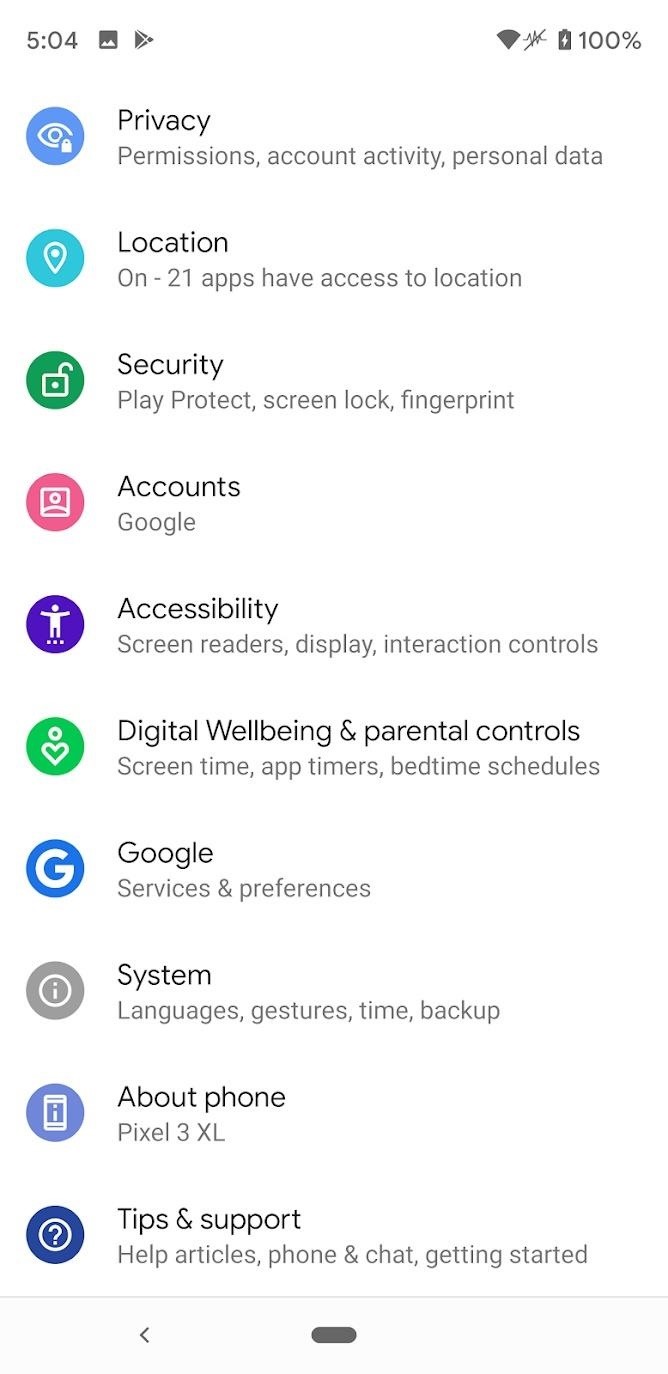News and New Product Briefs (April 14, 2000)
Oracle’s JDeveloper adds XML support
Oracle has updated its JDeveloper 3.1 for Java with the addition of end-to-end XML support, which allows developers to create and deploy applications in Java and XML. Oracle JDeveloper 3.1 makes it easier to work with XML data and Java application code simultaneously. Its features include:
- Color-coded syntax highlighting for XML
- Built-in syntax checking for XML and XSL
- XML results generated by Java code viewable in the same environment as program source code
- Support for XML Structured Query Language (XSQL) pages, with which developers can change and debug Oracle XSQL pages or place XML in a database without writing code
- Remote debugging of Java/XML applications running on Oracle8i and Oracle Application Servers
- Support for J2EE applications
Oracle JDeveloper also ships with Oracle Business Components for Java, which is a server-side application used to build Internet applications. Oracle Business Components help developers create reusable elements that can be implemented as either Enterprise JavaBean elements or as JavaServer Pages/servlet applications. These flexible implementations allow developers to employ the same business logic and data models for different browsers, clients, and wireless Internet devices without requiring code rewrites. Programmers can also customize current business components with wizards that change XML metadata descriptions.
More information on JDeveloper:
ErgoTech soups up JavaBeans suite
ErgoTech Systems’ Virtual Instrumentation Beans (VIB) software has been enhanced with the addition of more lightweight graphical components and with control elements called Manipulators. VIB is a JavaBeans suite used to create Java-based GUIs that oversee and manage manufacturing equipment. VIB components can be used to create strip charts, annuciators, knobs, bar charts, and active graphics.
The Manipulators are nongraphical JavaBeans that filter, logically analyze, and mathematically manipulate realtime data from VIB data sources. Manipulators can be connected to each other or directly to VIB graphical beans. Users can view VIB applets with any standard Web browser. VIB components can be directly inserted into off-the-shelf Java development systems. A drag-and-drop tool, called the Virtual Instrumentation Constructor (VIC), is also included for developing applets and testing components. VIC is available as a free download from ErgoTech.
VIB 3.0 pricing and licensing is currently unavailable.
More information on VIB:
iPlanet to support container- and bean-managed persistence
iPlanet and Thought have signed an agreement to add Thought’s CocoBase Enterprise O/R to iPlanet’s Netscape Application Server 4.0. The benefits of the pact allow iPlanet’s server to capitalize on container- and bean-managed persistence.
With container-managed persistence (CMP), developers can use iPlanet technology to create EJB elements without forcing them to handle persistence issues during development. Bean-managed persistence (BMP) calls for the creation of persistence code. The CocoBase Enterprise O/R mapping tool balances these processes by using templates to create CMP/BMP entity beans with persistence code, which supplies the iPlanet EJB offering with object-to-relational mapping capabilities.
mBedded Server supports Jini, WAP
ProSyst Software has announced the availability of the tiny mBedded Server, a software application that can be used to manage a variety of components in business and home appliance networks. The mBedded Server supports both the Wireless Application Protocol (WAP) and Sun’s Jini technology. It requires a mere 99 KB of memory, which means it can be deployed on devices ranging from set-top boxes to modems. Once available on these devices, it can supply an array of services, including software updates, Internet access, administrative functions, and email.
The mBedded Server can also be used to connect mobile clients (such as Java smart cards, cellular phones, and PDAs) to Jini-compatible household devices (such as ovens, refrigerators, security systems, or microwaves). Essentially, business applications and Internet services are obtained through the Jini Server and then apportioned to devices in a home network. The mBedded Server also acts as a platform for creating Jini client applications.
More information on the mBedded Server:
MapXtend technology helps customers find themselves
MapInfo has introduced MapXtend, a wireless spatial technology that allows users to access enterprise applications via handheld devices. Using MapXtend technology, organizations can provide field workers with realtime access to data on customer and facility locations via MapInfo’s MapXtreme Web software. MapInfo’s wireless technology connects to Oracle Spatial and Oracle8i databases; the information in those databases is supplied on Windows CE and Palm OS platforms. Thus, field workers can use PDAs to review, revise, and save information both centrally and locally.
MapXtend technology provides field workers with location-based information. It can be used to outline infrastructure locations, to coordinate field workers’ daily schedules, and to describe customer-specific information.
More information on MapXtend:
BroadVision’s One-To-One adds Java support
BroadVision’s One-To-One Enterprise Version 5 ebusiness software now supports WAP, Java, and XML technologies. BroadVision and Sun have been working together to add Java-based capabilities and XML support to the One-To-One application. BroadVision One-To-One Enterprise offers developers a component-based architecture that is entirely founded upon open standards. In addition to Java and XML, it supports LDAP, EJB, and COM.
BroadVision One-To-One features include:
- Advanced caching and load-balancing capabilities
- Targeted Web marketing efforts
- Content tools, which make updating a site easy for nontechnical users
- Web-to-wireless WAP
More information on BroadVision’s One-To-One Enterprise offering:
Stargazer 4.0 manages Avidia products
PairGain Technologies has introduced StarGazer 4.0, an element management system (EMS) that manages the Campus-RS and Avidia product lines. An EMS is a Java-based application that coordinates system elements via graphical views. StarGazer is a standalone application that operates on the Solaris or Windows NT platforms, or with HP’s OpenView Network Node Manager.
StarGazer is comprised of the following three elements:
- Toolbar, which behaves as a standard Windows toolbar and provides access to the tools and features of StarGazer
- IP Discovery, which finds and arranges managed elements into a hierarchical structure
- FrontPanel, which supplies a visual depiction of network elements
StarGazer 4.0 supplies in-band monitoring and fault management, as well as performance, configuration, and security abilities. The EMS allows many users to remotely monitor equipment transactions, configure DSL line profiles, and locate system defects. With multitiered security levels, administrators can create customized user access profiles.
StarGazer 4.0 pricing is based on per-server licensing agreements.
More information on StarGazer 4.0:
Consortium brings Salutation-Lite to Java
The Salutation Consortium plans to deliver a Java version of its Salutation-Lite service-discovery protocol. The Salutation architecture provides applications, network devices, and services with a standard way of describing their features and determining the capabilities of others. The architecture helps applications, network devices, and services look for a specific function and then ask for and authorize interoperable sessions with these complementary tools
Salutation-Lite is aimed at devices with small footprints, specifically palm-size and hand-held computers. It focuses mostly on service discovery. The Java version of Salutation-Lite implements client/server distributed Salutation-Lite applications by using Remote Method Invocation (RMI). A multileveled discussion occurs between the remote object client and the server.
Salutation-Lite is based on an open source model, which involves no licensing fees. Consortium members can download Salutation-Lite and beta code from the Website. The Java version should be available in May 2000.
More information on the Salutation Consortium:
dtSearch betas new version of dtSearch Web
dtSearch has released version 6.0 of its dtSearch Web and the dtSearch Text Retrieval Engine, which offer XML support.
Other recent additions include:
- Java support via a JNI interface to the dtSearch Text Retrieval Engine
- Unicode support, which allows for such double-byte character sets as Japanese and Chinese text
- Corel Office 2000 and Microsoft Office 2000 proprietary searching and indexing algorithms, which offer such search features as fuzzy search levels; concept searching; natural language searching; and proximity, boolean, and variable term weighting
A built-in HTML file-conversion tool is capable of searching database, word processor, zip, and spreadsheet files, and many other file types as well. The retrieved documents are listed within the user’s browser, and HTML links and images are saved. dtSearch Web also supports PDF searches.
With the dtSearch Text Retrieval Engine, developers can add search capabilities to a network, PC, or Internet/intranet offering. It is both a DLL and COM object and supports Java. It contains sample source code in Visual C++, C++, Active Server Pages, Visual Basic, and Delphi.
dtSearch Web and dtSearch Text Retrieval Engine are priced at a combined 99 per server.
More information on dtSearch Web:
GemStone disburses Java 2 Platform knowledge
GemStone Systems hopes to boost the development of J2EE applications by sharing its J2EE development practices with the Java community. GemStone is making the information available to developers via a newly launched Website, the Developer’s Center for Java Success. The site, which aims to facilitate the creation of B2B ecommerce sites, includes the source code for FoodSmart, a commercial-level ecommerce application based on J2EE standards.
The site contains information from GemStone’s advanced application architecture team (A3T), which helps organizations develop successful Internet commerce strategies by designing reliable Java-based ecommerce applications. The A3T shares with users high-performance architectures, best practices, advice on implementing J2EE, and other development tips. Developers can review the site for current design patterns, trade ideas with other developers, and post their own design patterns and other Java development experiences.
A CD release of the Developer’s Guide to iCommerce Success with J2EE is also currently available. The Developer’s Guide includes the source code for FoodSmart, a production version of the GemStone/J application server, and the J2EE iCommerce Success Sampler, which outlines distributed-object design practices. The GemStone/J application that ships on the CD is available as a free 30-day trial version.
Check out the Developer’s Center for Java Success:
Sign up for a free copy of the Developer’s Guide to iCommerce Success with J2EE:
VSI and Extensibility integrate XML products
VSI and Extensibility have signed an agreement to combine and market a version of Extensibility’s XML Authority software that includes VSI’s Breeze XML Studio. With this combination of products, developers can use Breeze XML Studio to produce Java API code from schema structures generated by XML Authority. Breeze XML Studio complements XML Authority because it generates JavaBeans that are connected to the XML elements, structures, and attributes outlined by Extensibility’s XML Authority product.
Oracle Schema Processor verifies XML docs
Oracle has expanded its Oracle XML Developer’s Kit (XDK) with the addition of the Oracle XML Schema Processor for Java. The Oracle XML Schema Processor automatically verifies XML documents and data found in ebusiness applications. It relies on a working draft of the XML Schema standard, and supports complex and simple data types for the validation and processing of XML schemas.
The Oracle XML Schema Processor saves development time by providing developers with an established data-type and structures-validation library, rather than requiring developers to manually create rules and procedures for each application. The Oracle XDK is comprised of an XSLT Processor; XML parsers for Java, C++, C, and PL/SQL; an XML Class Generator; an XML Schema Processor; and XML Transviewer JavaBeans.
More information on the most recent additions to Oracle XML Developer’s Kit:
Netegrity’s SiteMinder secures J2EE platform
Netegrity has added J2EE support to its SiteMinder 4.0 security management software. SiteMinder can now manage and secure organizations’ component-oriented Java applications, including JavaServer Pages, Enterprise JavaBeans, and Java servlets.
SiteMinder’s J2EE support also:
- Allows J2EE developers to incorporate password management, public key infrastructure, and biometric abilities into Java applications
- Provides central management capabilities, which allow single sign-on access across the enterprise
- Creates policies with which user access to J2EE applications can be managed centrally
A gradual rollout of the J2EE-compliant SiteMinder will begin with support for IBM’s WebSphere 3.0 Advanced Edition and BEA’s WebLogic Server 5.1.
More information on SiteMinder 4.0:



